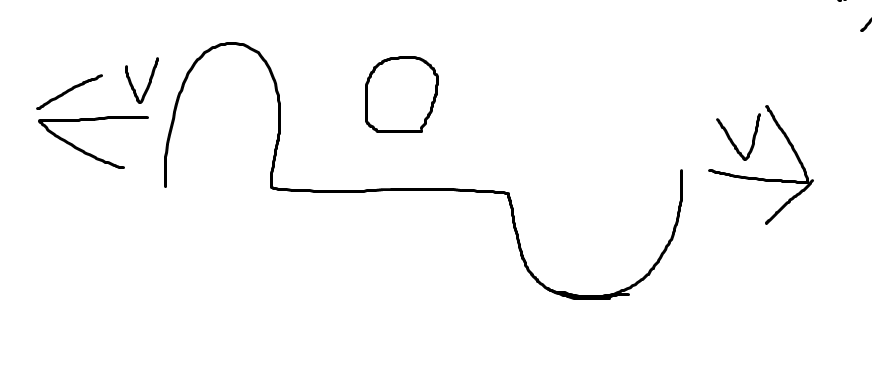

can't_think_of_a_name
-
Posts
66 -
Joined
-
Last visited
Content Type
Profiles
Forums
Events
Posts posted by can't_think_of_a_name
-
-
I think I got the first picture. But tips would appreciated what kind of math is this called ? I assume some form of algebra?
0 -
Yep perfectly clear now thank.
The part that confuses me in the first picture is I have 2 TA on two different side of the equation and don't know how to get rid of either. Any advice?
Any advice in general when doing this type of question? I remember hearing if I had a^2 I wanted a^2 because the units match. I don't have a^2 just using that as an example.0 -
How is 1 - (v2/c2) = (c2 - v2)/ c2 the same?
0 -
-
The rules I try to apply in no order and different combos are switching the denominator and numerator on both sides of the equation. Also if I remove a variable I do what I do to one side as the other side of the equation. Cross multiplying and factoring out a variable. I can't seem to get the answers. Any help is appreciated?

 0
0 -
Also what is horizon problem for the warp drive in simple language?
What do they mean by a ring of negative energy?
Also does the bubble move like this? If not how does it move? 0
0 -
-
Do you need a flat or low curvature region from gravity for the warp drive? I meant warp bubble.
Does the positive mass need to = the negative mass for the warp bubble to be created?
19 hours ago, Markus Hanke said:Every small enough region of spacetime will be locally flat, just as every small enough area of the Earth‘s surface appears locally flat, even though the planet overall is spherical. What “small enough” means depends on the exact circumstances.
I am having trouble understanding the above it is vague answer. Are you trying to say that every region is flat enough for a warp bubble? Can you explain? What I mean by small enough is small enough for a warp bubble.
I realize the warp drive doesn't exist but am curious.Thanks for the answers.0 -
I still learning special relativity I have not got to general relativity yet.
Are there any other ways besides mentioned to create conditions of a flat region of space? Can you list every possible way?
Also I heard from an earlier post that space curvature can be relativity flat. I quoted it. Can you take that into consideration?
Also I mention gravity curvature needs to be on both sides and flat region between. What about instead of sandwiched in between two curvatures of gravity I Just have one curvature one either right or left side. Can you take that into consideration?
Do you need a flat or low curvature region from gravity for the warp drive?
Is there anyway for an object to not feel the effect of gravity in a curvature of gravity or be a low region of curvature? An example would be a way to block gravity to feel flat. I know you mentioned shell theory. Are there any other ways?
Does the positive mass need to = the negative mass for the warp drive to work?
What happens to negative mass in a positive mass curvature?
Thanks.0 -
So I had to do a little googling shell theory is the theory that gravity is the same on a shell. An example could be earth. So if I was on a planet curvature is flat assuming there is nothing else. Can I be on the surface of the earth or do I have to be inside the earth? What happens if space isn't empty besides the sphere? Any other ways to create the flat region besides what you have mentioned? This question is open to anyone?
17 hours ago, Markus Hanke said:There will be different ways to do this, but the simplest one I can think of is a hollow sphere (i.e. a massive shell) in an otherwise empty region of space. Once you go far enough away from the sphere, spacetime will be approximately flat; spacetime in the hollow interior of the shell is also flat (shell theorem); but the region in between is not flat - it has exterior Schwarzschild geometry.
Note though that, even though both of these distant regions are flat, if you were to place a clock into the interior hollow of the shell, you would find that it is gravitationally time-dilated with respect to a reference clock in the flat region for away.0 -
I want to delete this comment.
0 -
Lets ignore the warp bubble for the second question. How could I have 2 regions of space that bend space and in between the two warped space regions be flat? If you are having trouble understanding the second question let me make a diagram. "u=u" The diagram isn't perfect. The u represents the bending of space and the = represents the flat space. I don't have an understanding of general relativity so this might make it harder to get a comprehensive answer
0


I am having trouble getting from step 1 to step 2. here are 2 examples. This is in reference to relativity of simultaneity
in Homework Help
Posted · Edited by can't_think_of_a_name
I think I got the correct answer I will double check later.
Where can I find questions that can be solved that are similar to the ones I posted?
Also I have another question hopefully the picture is attached. How does La/v etc become Lb/v etc? I start with the information L_moving because Alice is moving. I don't have Bob's frame. My point is I have L_moving not L_stationary. I am referencing to this formula L' = L/y. In order to get L shouldn't I go L = L'Y?